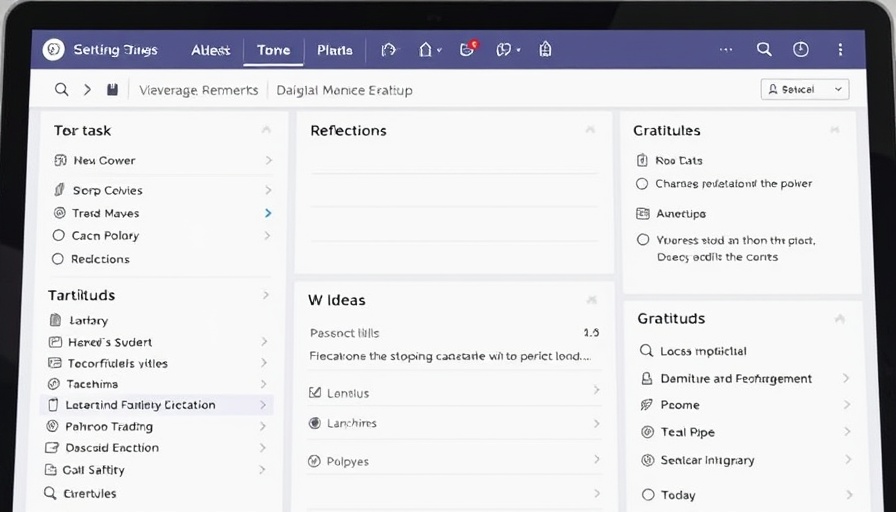
Understanding Ad Hoc Meetings: A Key Factor in Business Success
In the ever-changing landscape of business operations, ad hoc meetings have emerged as a lifeline for mid-sized companies striving to make swift decisions. Unlike regular meetings on steady schedules, these impromptu gatherings are designed to tackle urgent issues, align on specific projects, or brainstorm new ideas. They can be pivotal in driving efficient collaboration and effective problem-solving during rapid growth periods.
The Importance of Effective Collaboration
For business owners generating $2M–$10M+ in annual revenue, the ability to foster collaboration is instrumental. Ad hoc meetings can bridge communication gaps, providing a space for teams to share insights and optimize project management. By engaging key stakeholders and getting immediate feedback, organizations can iterate on product development while ensuring teams remain agile in their workflows.
Key Elements of Hosting an Effective Ad Hoc Meeting
Running an effective ad hoc meeting involves several critical steps:
- Define the Purpose: Start with a clear agenda. What specific issue needs addressing? Keep it simple to ensure focus.
- Limit Attendees: Invite only those essential for the topic at hand. This maximizes efficiency and encourages active participation.
- Utilize Tools and Software: Leverage project management software tools that enhance collaboration and keep everyone on the same page, such as ClickUp, Trello, or Asana.
- Schedule Wisely: Use tools for checking availability to find a suitable time without overwhelming team members.
- Follow-Up: Document discussions and decisions, and share notes promptly to ensure accountability and continuity of efforts.
Common Pitfalls and How to Avoid Them
While the benefits of ad hoc meetings are substantial, they can easily become time wasters if not managed properly. Common pitfalls include:
- Vagueness in Purpose: A lack of clear objectives can derail the meeting. Ensure each gathering has a defined goal.
- Too Many Participants: Having too many voices can lead to confusion. Stick to a core group to streamline discussions.
- Neglecting Action Items: Failing to follow up on decisions made can render the meeting useless. Create actionable tasks with clear deadlines.
Benefits of Ad Hoc Meetings in Scaling Operations
For business owners actively scaling operations, ad hoc meetings represent more than just a temporary solution—they are a strategic tool. They can lead to faster decision-making, improved innovation, and better management of resources during transitions. By implementing these meetings effectively, businesses can pave the way for sustainable growth and prosperous operational infrastructure.
To foster a culture that embraces effective communication and collaboration, consider refining your approach to ad hoc meetings. Allocate time to evaluate your current processes and experiment with various workflows until you find what best fits your team's dynamic.
Invest in project management software that facilitates collaboration and track progress seamlessly, ensuring your meetings translate into actionable results.
 Add Row
Add Row  Add
Add 



Write A Comment